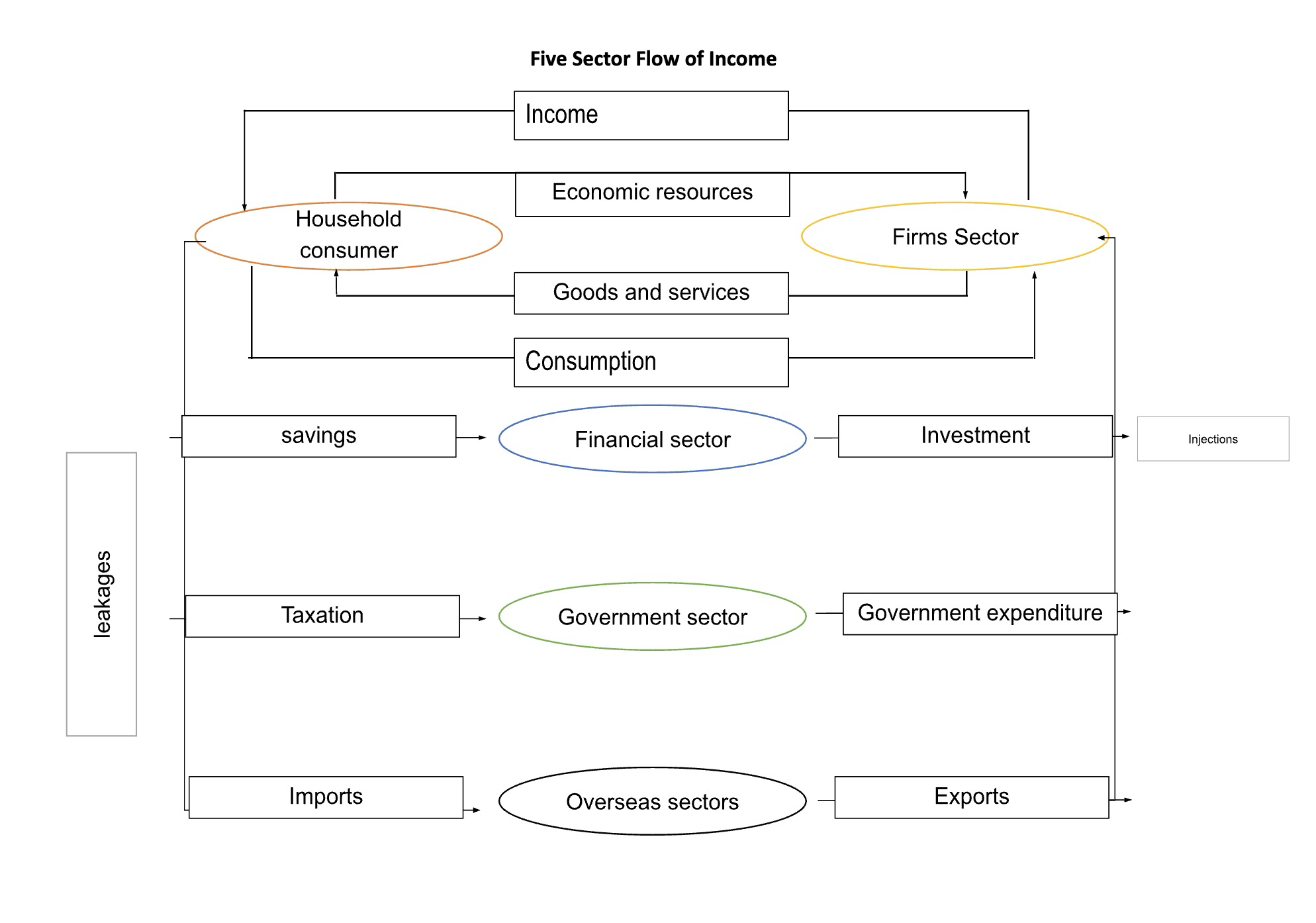The circular flow model is an economic model that shows the flow of money through the economy.
It shows the connections between the five sectors of an economy:
Consumers
- Consumers or households earn an income from the factors of production (land, labour, capital or enterprise). With this income they purchase goods and services from firms to satisfy their needs and wants.
In summary:
Businesses
Businesses produce goods and services for consumers, and buy resources from the household sector. This can be:
- Labour: expertise, skills and time to produce the goods and services.
- Financial Resources: cash flow for businesses to operate and expand their production from the sale of goods and services.
In summary:
- Money that flows in - sales revenue in exchange for G&S
- Money that flows out - income (wages, salary) in exchange for resources
Financial Institutions
- Financial Institutions are the intermediaries between savers and borrowers.
- For example: banks, superannuation funds, trusts and insurance companies.
- They receive savings (S) from individuals and businesses and then lend to the borrowers (which can also be other individuals and businesses) as Investment (I).
- Savings (S) are put away for future use, this is a leakage.
- Investment (I) is used for businesses to expand and grow their businesses and for consumers to purchase other items. This is an injection.
Government
Governments raise revenue from Taxes (T). This can be income tax, business tax, GST, stamp duty, payroll tax, as leakage.
- They then use this revenue to provide goods and services to the community as Government Expenditure (G).
- This includes education, healthcare, infrastructure, welfare payments, etc, as injection.
In summary:
- Money that flows in - government expenditure
- Money that flows out - taxation revenue (T)
Overseas
This consists of exporters and importer from the rest of the world.
- Exports are sold by Australian firms to foreign countries (such as wool, iron ore and coal)
- Imports are bought by Australians from foreign countries (such as electronics)
In summary:
- Money that flows in - exports (X)
- Money that flows out - imports (M)
Flowchart
